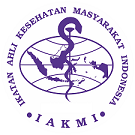The Differences in Characteristics of Preeclampsia Before and During The COVID-19 Pandemic: Systematic Review
DOI:
https://doi.org/10.26911/thejmch.2024.09.05.08Abstract
Background: The COVID-19 pandemic has entered Indonesia since 2020 and has become a global pandemic. In the pre-pandemic period, Preeclampsia was one of the main causes of death of pregnant women in Indonesia. During the COVID-19 pandemic, the mortality rate of pregnant women and childbirth due to preeclampsia has the possibility of an increase. The cause of preeclampsia in pregnant women is not yet known. Early detection of risk factors and early treatment of preeclampsia are not carried out quickly and appropriately due to social restrictions due to the pandemic.
Subject and Method: This study is a systematic review literature review conducted on selected databases (PubMed, Science Direcet, Unair Repository) with a publication year between 2017 and 2022. Literature uses Indonesian and English. The literature included was literature with cohort, cross sectional, and case control methods. The quality assessment of the literature was carried out using the EPHPP (Effective Public Health Practice Project).
Results: There were no significant differences in Preeclampsia characteristics i.e. age at pregnancy, parity, and BMI in both periods before and during the COVID-19 pandemic. However, differences were found that only existed in the period during the COVID-19 pandemic, namely comorbid diseases and previous history of preeclampsia
Conclusions: In the period before and during the COVID-19 pandemic, pregnant women with preeclampsia did not show differences in outcomes in characteristics, but in the history of comorbid diseases and previous history of preeclampsia.
Keywords:
preeclampsia, COVID-19, pregnant women, comorbiditiesHow to Cite
References
Akbar MIA, Adibrata MA, Aditiawarman, Aryananda RA, Angsar MD, Dekker G (2019). Maternal and perinatal outcome related to severity of chronic hypertension in pregnancy. Pregnancy Hypertens. 16: 154-160. https://doi.org/10.1016/j.preghy.2019.04.007.
Baschat AA, Magder LS, Doyle LE, Atlas RO, Jenkins CB, Blitzer MG (2014). Prediction of preeclampsia utilizing the first trimester screening examination. Am J Obstet Gynecol. 211(5):514.e1-7. https://doi.org/10.1016/j.ajog.2014.04.018.
Bilano VL, Ota E, Ganchimeg T, Mori R, Souza JP (2014). Risk factors of preeclampsia/ eclampsia and its adverse outcomes in low- and middle-income countries: A WHO Secondary Analysis. PLoS One. 9(3):e1198. https://doi.org/10.1371/journal.pone.0091198.
Kartika A, Akbar A, Umiastuti P (2017). Risk factor of severe preeclampsia in Dr. Soetomo Hospital Surabaya in 2015. Majalah Obstetri & Ginekologi, 25(1). Skripsi. Universitas Airlangga.
Ministry of Health RI (2020). Indonesia's health profile in 2019 (Profil kesehatan indonesia tahun 2019). Pusat Data Dan Informasi Kementerian Kesehatan Republik Indonesia.
Ministry of Finance (2021). The influence of COVID-19 on global socio-economic conditions in 2020 (pengaruh COVID-19 atas kondisi sosial ekonomi global 2020). Retrieved from: https://pen.kemenkeu.go.id/in/page/sosial-ekonomiglobal on March 19, 2022.
Nursal DGA, Tamela P, Fitrayeni (2015). Risk factors for the incidence of preeclampsia in pregnant women at Dr. Djamil Padang Hospital in 2014 (Faktor risiko Kejadian Preeklamsia pada Ibu hamil di RSUP Dr. Djamil Padang tahun 2014). Jurnal Kesehatan Masyarakat Andalas, 10(1): 38-44. doi 10.24893/jkma.v10i1.161
Nobrega GM, Guida JP, Juliana M, Novaes A, Larissa M, Solda a, Luciana PAB et al. (2022). Role of biomarkers (sFlt1/PlGF) in cases of COVID-19 for distinguishing preeclampsia and guiding clinical management. Pregnancy Hypertens. 31: 32-37. https://doi.org/10.1016/j.preghy.2022.11.008.
Nofiyana, Alfi, Purwati (2020). The relationship between anxiety and preeclampsia events at Dr. R. Goeteng Tarunadibrata Purbalingga Hospital (Hubungan kecemasan dan kejadian pre eklampsia di RSUD dr. R. Goeteng Tarunadibrata Purbalingga. Jurnal Kebidanan Harapan Ibu Pekalongan. 7(1): 32-38.
Opitasari C, Andayasari L (2014). Parity, education level and risk for (pre) eclampsia in selected hospital in Jakarta. Risk factors for preeclampsia, 5(1): 35-39.
Palomo M, Youssef L, Ramos A, Torramade-Moix S, Moreno-Castaño AB, Martinez-Sanchez J, Bonastre L, et al. (2022). Differences and similarities in endothelial and angiogenic profiles of preeclampsia and COVID-19 in pregnancy. Am J Obstet Gynecol. 227(2): 277.e1-277.e16. https://doi.org/10.1016/j.ajog.2022.03.048.
Renita MM, Yunita DPS, Anik S (2018). Incidence of preeclampsia in maternal mothers (Kejadian preeklampsia pada ibu bersalin). Skripsi. Universitas Airlangga.
Wardhana MP, Harsono AAH, Intan RE, Hutama SA, Irzaldy A, Sukmajaya WP, Salamah S, Alkaff FF (2022). Characteristic comparison between pregnant women with and without preeclampsia. J Int Dental Med Res. 14(1): 446-452.
Wulandari ES, Ernawati, Nuswantoro D (2020). The relationship between pregnancy distance and the incidence of recurrent preeclampsia in multigravida pregnant women at DR Hospital (Hubungan Jarak Kehamilan Dengan Kejadian Preeklamsia Berulang Pada Ibu Hamil Multigravida Di RSUD DR.Soetomo Tahun 2017). Skripsi. Universitas Airlangga.










